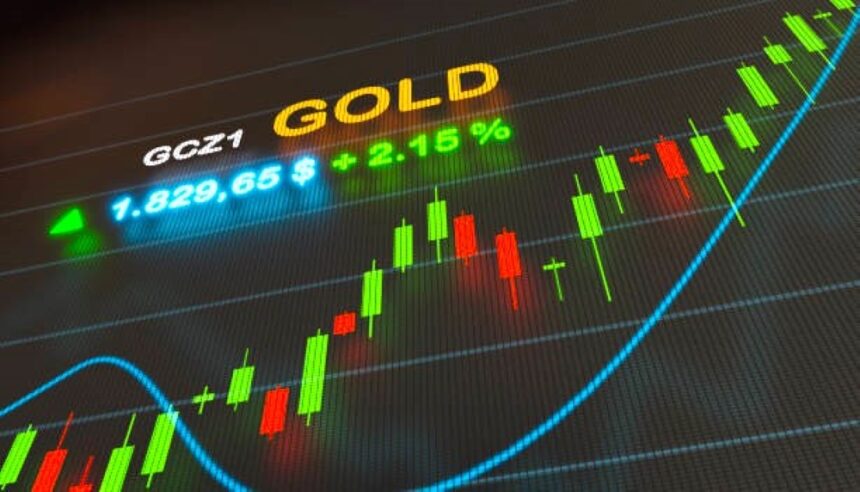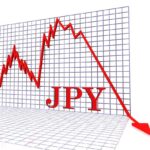Gold Retreats After Hitting All-Time High: Why the Bullish Momentum Isn’t Over Yet.
Gold (XAUUSD) prices experienced a subtle pullback on Monday, sliding from a fresh all-time high of $3,245 to around $3,220 in early European trading. The slight retreat follows a wave of profit-taking triggered by improved investor sentiment and a marginally overbought technical setup. However, deeper macroeconomic factors—including a bearish US Dollar, Federal Reserve rate cut expectations, and worsening US-China trade tensions—continue to bolster gold safe-haven appeal, suggesting this dip may be short-live.
A Record High, Then a Pause: What’s Driving Gold’s Moves?
Gold’s sharp rally to a new historic high was catalyzed by a combination of geopolitical, economic, and monetary developments. The metal’s role as a non-yielding, inflation-hedging, and crisis-protective asset has once again taken center stage as global uncertainty surges.
1. Escalating US-China Trade Tensions
The most immediate driver of gold’s surge has been the renewed escalation in the US-China trade war. In a tit-for-tat move, China ramped up tariffs on US imports to 125%, retaliating against the US government’s decision to raise duties on Chinese goods to 145%. This intensification of trade hostilities between the world’s two largest economies has triggered fears of a prolonged global slowdown.
Historically, gold has benefited during trade disputes, as investors shift capital away from riskier assets like equities into more stable instruments such as precious metals. The latest developments echo previous market reactions seen during the 2018–2019 trade war phase, reaffirming gold’s position as a hedge against geopolitical strife.
2. Fed Rate Cuts on the Horizon
Another pillar supporting gold prices is the market’s firm belief that the Federal Reserve will cut interest rates multiple times in 2025. The CME FedWatch tool indicates that traders are now pricing in at least 90 basis points of cuts by year-end, amid growing signs of an economic slowdown driven by trade tariffs and weakening demand.
Lower interest rates reduce the opportunity cost of holding non-yielding assets like gold. When yields on bonds and savings accounts fall, the relative appeal of gold increases—especially as it becomes a store of value in uncertain times.
3. Slumping Inflation Signals Dovish Policy
Fresh data from the US Bureau of Labor Statistics adds weight to the case for policy easing. The headline Consumer Price Index (CPI) fell by 0.1% in March, and the year-over-year rate slowed dramatically from 2.8% to 2.4%. Core inflation—excluding food and energy—also edged up only 0.1% on the month and stood at 2.8% annually, its lowest level in nearly four years.
Such a deceleration in inflation, combined with fears of a trade-induced recession, gives the Fed more room to cut interest rates. This further strengthens gold’s bullish outlook, as easing policies tend to weaken the USD and drive investors toward safe-haven assets.
4. A Weakening Dollar Boosts XAU/USD
The US Dollar has slid to its lowest level since April 2022. With markets anticipating prolonged monetary accommodation from the Fed. The inverse relationship between gold and the dollar is well-documented: when the greenback weakens. Gold becomes cheaper for international buyers, thus increasing demand.
With US Treasury yields also showing erratic behavior—suggesting a lack of investor confidence in US government bonds—the broader macro environment is turning decisively in favor of precious metals.
Technical Overview: Overbought but Not Over
Despite the bullish macro backdrop, gold’s current retreat can be partly attributed to technical factors. The Relative Strength Index (RSI) on the daily chart crossed into overbought territory, prompting cautious traders to lock in profits near record levels. However, these short-term corrections are typical during strong uptrends and often present buying opportunities.
Key Levels to Watch:
Immediate support: $3,200 – A psychological and technical buffer zone.
Major support: $3,165 – The breakout zone from the previous consolidation.
Upside resistance: $3,245 (record high), followed by potential extensions toward $3,300 if momentum resumes.
Barring a dramatic shift in fundamentals, gold’s bias remains upward. The broader picture still suggests any dip is more likely a pause than a reversal.
Market Reaction and What’s Next
The pullback in gold coincides with a mild risk-on mood in equity markets. Investors have momentarily turned optimistic. Perhaps in response to oversold stocks or expectations of eventual trade resolutions. However, this positive sentiment is fragile. And key events later this week could rapidly swing sentiment back in gold’s favor.
FOMC Speakers and Jerome Powell’s Speech
The market will closely monitor comments from Fed officials, especially Chair Jerome Powell, who is scheduled to speak on Wednesday. Traders will be looking for clues on how aggressive the central bank plans to be with rate cuts.
Any dovish signals from Powell could spark renewed gold buying and potentially push the metal to fresh record highs.
Retail Sales Data Incoming
Also due Wednesday is the US Retail Sales report, a key indicator of consumer strength. If the data disappoints, it could reinforce recession fears and further weaken the USD—creating another tailwind for gold prices.
Bottom Line: Gold Is Still Shining Bright
Gold’s slight retreat from record highs is not a signal of reversal—it’s a breather in a broader bullish run. With a faltering USD, dovish Fed expectations, escalating trade war tensions, and softer inflation data. The macro environment remains highly supportive for gold.
Traders may want to view the current dip as a strategic buy-the-dip opportunity, keeping a close eye on central bank guidance and US economic data in the coming days.









